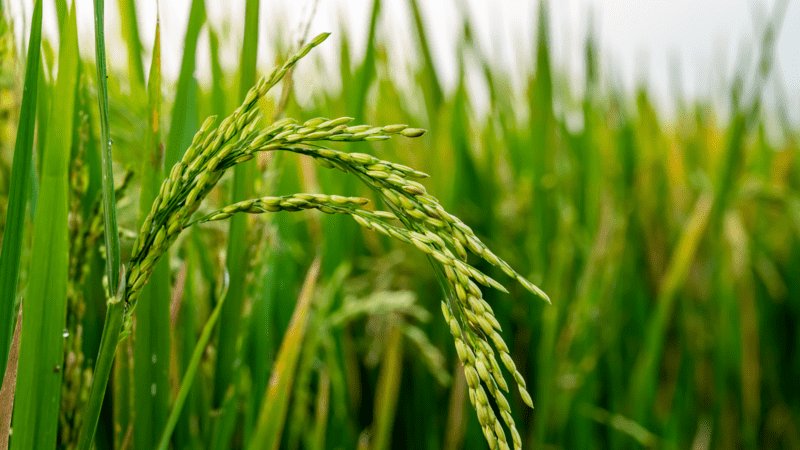INTERVIEW: Polish farmers' protest a 'concern' for Ukrainian agricultural exports: UCAB director

The Polish farmers' protest, which intensified in the last few weeks, has become a cause of concern for Ukrainian agricultural exports, as Poland remains a key alternative route to the Black Sea, the director of Ukrainian Agribusiness Club at the EU office said in an interview.
The Polish farmers have been protesting the import and transit of Ukrainian grains since January, alleging that poor quality Ukrainian produce is harming the country's food supply. The protest intensified around mid-February, with farmers blocking Ukraine's borders.
Nazar Bobitski of UCAB called the Polish claims of the oversaturation of their market as "untrue", as only 5% of the total volume of 6.7 million mt of Ukrainian cereals and oilseeds exported in January went through Poland while the bulk of it was sent through Romania and the Port of Constanta.
"The Polish government still maintains a national backlog of imports of Ukrainian cereals, so they allow only transit... We already do not sell any wheat to Poland per se," Bobitski told S&P Global Commodity Insights.
During marketing year 2023-24 (July-June), Ukraine's corn exports stood at 15.43 million mt while those of wheat were at 11.26 million mt as of Feb. 26, according to Ukranian's Ministry of Agrarian Policy and Food data.
MY 2024-25 cereals acreage seen lower
Ukrainian farmers are likely to cut down the cereals and rapeseed acreage for MY 2024-25 as against MY 2023-24.
"Our farmers are in the red and they are very likely to significantly cut down the sowing area, at least by 17%, for the next marketing year," UCAB director said.
Thus, it is difficult to forecast the country's cereals exports for MY 2024-25, he added. However, UCAB's preliminary data shows that Ukraine's MY 2024-25 cereals, including wheat, corn and barley, exports may reach 35-40 million mt.
"This forecast may change depending on several factors... The EU is planning to introduce safeguard measures to limit imports of poultry and eggs from Ukraine but the European Aquafood Lobby lobbies to limit cereals imports as well," Bobitski said.
If Europe introduces any measures that limit the trade or transit of Ukrainian agricultural products, it will have a direct impact on Ukraine's microeconomic stability, he added.
Ukraine plans to ship grains via Danube
Though Ukraine continues to export grains through the Black Sea route, it is not fully secure, Bobitski said.
"It is a unilaterally secured route, but very precarious because the Russians can still block the passage of vessels at any time."
Amid the Black Sea port blockages and tensions on Polish border, Ukraine plans to export its grains to central and western Europe via new routes along the Danube River.
Ukraine can also export using the Romanian port and the railway infrastructure on the Black Sea, he added.

News
For all the clamor and controversy surrounding the Securities and Exchange Commission’s (SEC) climate risk disclosure rule, the regulatory requirements look unlikely to have a major impact on US agri-food companies. The SEC proposed the climate risk disclosure rule in March 2022 to require publicly-traded companies to disclose greenhouse gas emissions and detail the business risks they face from climate change. Advocates of the rule said it would provide investors with consistent and comparable information for investors while ensuring companies, many of whom are voluntarily providing climate risk information, with consistent and clear reporting obligations. But the proposal faced swift and vocal criticism from business interests, notably the oil and gas sector, who urged the SEC to either abandon the draft rule or roll back the requirements. Ag industry pressure also helped to convince the SEC to abandon the mandate for disclosure of supply chain emissions (Scope 3), which account for nearly 90% of the food industry’s carbon footprint. Led by the American Farm Bureau Federation, ag interests warned that the proposed rule’s Scope 3 disclosure requirement would have unfairly hit farmers, ranchers and other private entities who supply products to SEC registrants and are part of their supply chains. The proposal detailed that SEC registrants would not have to get detailed emissions data from their suppliers and could use industry estimates, but the Farm Bureau and others were unconvinced and warned that the Scope 3 requirement would force ag producers to measure and report their greenhouse gas emissions. Ag interests hailed the removal of the Scope 3 requirement from the final rule, which was rolled back in several other ways that reduced the scope of the disclosures and those required to report. The proposed rule would have required GHG emissions disclosures from all SEC registrants, but the final rule limits those requirements to companies with more than $75 million of stock held by public investors. The SEC’s final rule only call on those larger companies to report the direct GHG emissions from sources they own or control — known as Scope 1 — along with Scope 2, which are the indirect emissions from the production of energy used for the company’s operations. The agency also eased the reporting requirements by including a “materiality” standard. This means that registrants only need to report Scope 1 and/or Scope 2 emissions that they believe a reasonable investor would consider important to disclose. The rest of the regime will apply to all foreign and domestic SEC registrants, requiring disclosure of climate risks that have a “material impact” on a registrant’s business strategy, results of operation, or financial condition, as well as details on how registrants manage those risks. Companies with strategies to reduce the climate impacts of their operations, such as stated goals to cut greenhouse gas emissions, will be required to provide information to substantiate their claims. The final rule also mandates disclosure of costs and losses related to carbon offsets and renewable energy credits as well as the expenditures and losses as a result of severe weather and other natural conditions. The SEC estimates that some 2,800 US companies and 540 foreign companies will be subject to the climate rule. Disclosures were scheduled to be phased in starting next year with the first emissions reporting due in 2026, but that timeframe is in limbo while the rule is under judicial review. The agency was hit with the first legal challenge mere hours after it finalized the rule on March 6 and is facing nine lawsuits contesting its regulatory regime. Those complaints include eight lawsuits brought by 24 Republican-led states, oil and gas companies, and the US Chamber of Commerce that allege the rule is onerous and that the SEC lacked authority to impose the disclosure requirements. The other lawsuit was brought by the Sierra Club, which alleges the removal of the Scope 3 requirement undermines the intent of the rule. The litigation has thrown the future of the rule in doubt and the SEC has put implementation on hold while the complaints are pending. Beyond the legal challenges, the rule could be upended if the Republicans gain control of the White House. But the potential impact of the rule on the agri-food sector is also diminished because many companies that could be covered by the SEC’s climate disclosure requirements are affected by much more stringent regulations already in effect in the EU or under development in California. US agri-food businesses covered by the EU regime are likely already beginning to comply with the Corporate Sustainability Reporting Directive and those with operations in California may be planning on how to comply with its climate disclosure laws. The California rules go further than the SEC, impacting large private companies as well as public firms who do business in the state and also requiring Scope 3 emissions disclosures. Not surprisingly, those rules have been challenged in court by business groups and ag interests. Implementation is also in question given California’s budgetary woes, but clarity on that front should emerge this summer.

News
India's wheat stocks in state-run inventories depleted to a 16-year low as the central government sold record quantities to augment domestic supplies and rein in rising prices amid poor crop yields during two previous seasons. Wheat stocks in government warehouses were at 7.5 million mt at the start of April, down from 8.4 million mt a year ago, an official at the Food Corporation of India told S&P Global Commodity Insights. Over the past decade, wheat stocks on April 1 averaged 16.7 million mt. Despite the sharp fall in stocks, the government was able to meet the buffer and strategic reserve norms that mandate holding wheat stocks at or above 7.46 million mt April 1. The government has planned to aggressively acquire wheat to replenish its stocks at state-run warehouses. The government plans to procure around 33.5 million mt wheat produced in marketing year 2024-25 (April-March), nearly 28% higher than the actual procurement of 26.2 million mt a year prior. India could not reach its wheat procurement target in MY 2022-23 and MY 2023-24, as heat waves weighed on the crop size. However, the pace of procurement has slowed over the past week as recent showers in key wheat producing states have delayed harvest operations, traders said. The government has pegged India's wheat output in crop year 2023-24 (July-June) at 112 million mt, slightly higher than the 110.55 million mt harvested in the previous season. However, an S&P Global Commodity Insights survey of 13 analysts and traders found India's wheat harvest in MY 2023-24 is likely slightly lower year on year, at 107 million-108 million mt. Recently, it has ordered mandatory declaration of wheat stocks available with traders, private warehouses, retailers and processors on a government-managed portal effective April 1 and every Friday thereafter, in a bid to ensure availability and prevent hoarding. Record sales The country has delved into state reserves to sell wheat to bulk consumers, as millers to try to curb domestic prices that have been above the state-fixed minimum buying price since the last crop was harvested. India has also provided repeated extensions to the scheme of distribution of free food grains to over 810 million beneficiaries under the Pradhan Mantri Garib Kalyan Anna Yojana for five years effective Jan. 1, 2024, has dampened the prospects for wheat and non-basmati rice exports in 2024. The move is aimed at ensuring food security to the beneficiaries, according to a government statement. The scheme, which was set to end this December, has been extended amid ongoing state assembly polls and upcoming general elections next year. However, if the government misses its procurement target, it may have to look for cheap imports or reduce import duty on the grain to ensure adequate domestic supplies. Despite the tight supply, it has been resisting calls to reduce or remove the 40% import duty on wheat. The government is also likely to extend export restrictions on wheat until March 2025. India banned wheat exports in May 2022, after domestic supplies tightened amid a drop in output. In marketing year 2022-23 (April-March), India planned to export nearly 10 million mt of wheat but ended up shipping nearly 5 million mt. Geopolitical tensions Benchmark grain, oilseed and vegetable oil futures rose overnight in the US and during morning trade in Asia April 19, reversing a bearish streak, after Israel launched a retaliatory missile attack on Iran, fueling fears of an escalating conflict in the Middle East. Any potential supply bottlenecks may spur a rise in export prices of wheat from Black Sea origin, traders said. The most active July soft red winter wheat contract on the Chicago Board of Trade rose 2.6% from the previous close to $5.675/bushel at 0320 GMT. As of 1640 GMT, the contract was trading at $5.62/bushel, up 1.67% from the previous close. In the EU, the Euronext milling wheat contract for May was up 0.4% from the previous close at Eur206.50/mt ($219.88) as of 1640 GMT. Platts, part of S&P Global Commodity Insights, assessed EU 11.5% wheat FOB CVB at $213.25/mt April 18, up $1/mt on the day.